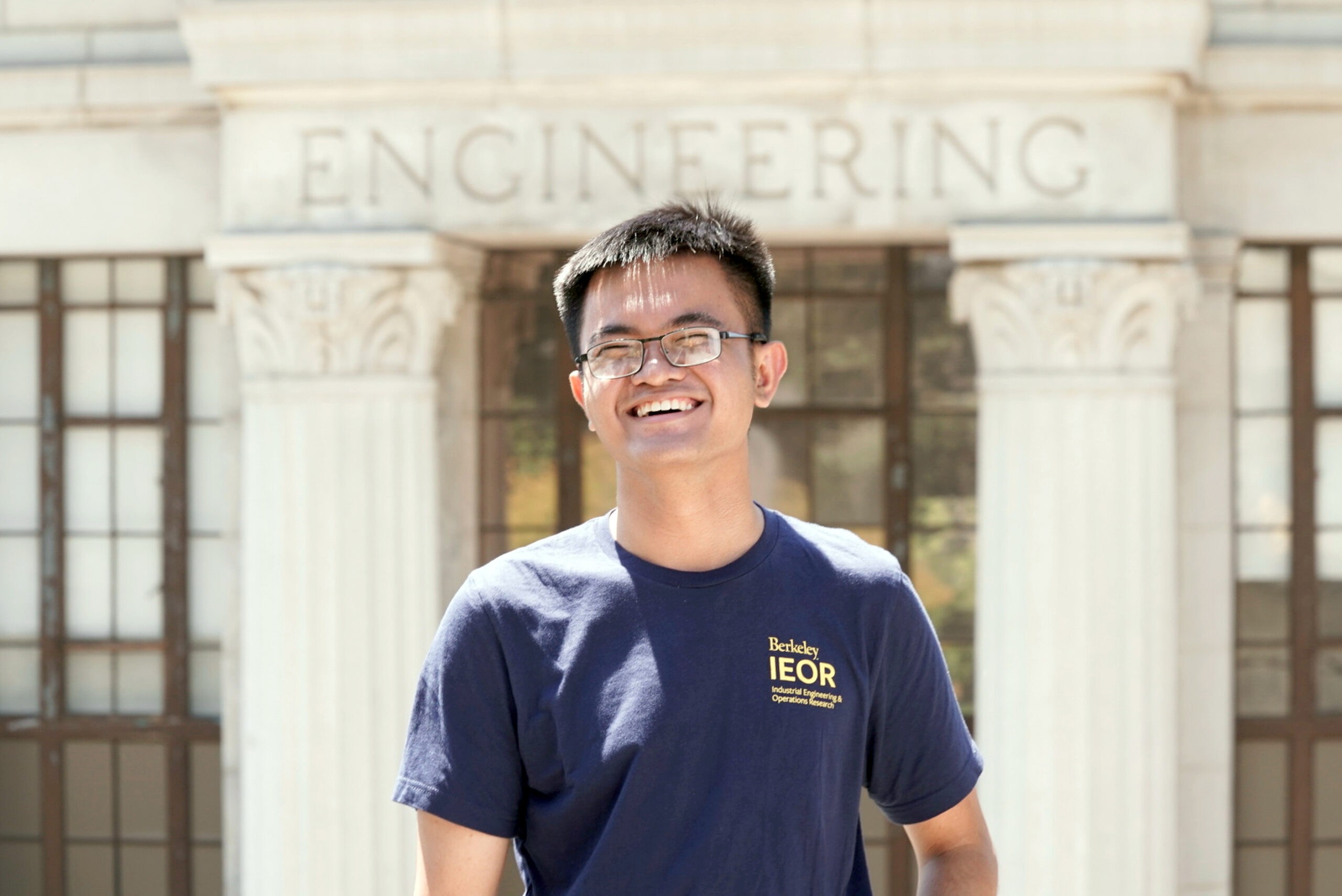
Industrial Engineering & Operations Research
In Berkeley’s Department of Industrial Engineering & Operations Research, we create solutions to complex global challenges by harnessing the power of AI and data science to engineer sustainable, efficient and resilient systems and processes for today’s rapidly changing, technology-driven world. Berkeley IEOR faculty members pioneer transformative algorithms that redefine entire industries, and our alums carry forward this tradition, innovating new approaches to improve real-world systems, from supply chains to transportation, healthcare and financial markets. Our alums lead innovation in nearly every industry where they serve as executives, researchers and analysts, and they make a significant impact as academics in universities worldwide.
Did you know?
- Algorithms drive critical decisions about healthcare, criminal law, education and even our finances, but they are not immune to harmful bias. Now, professor Anil Aswani and Matt Olfat (Ph.D.’20 IEOR) have pioneered the first theoretically proven approach to fairness applicable across various groups and traits, advancing data-driven decision-making towards unbiased accuracy.
- Robots might help revolutionize global agriculture with precision irrigation. An IEOR project called RAPID (Robot-Assisted Precision Irrigation Delivery) utilizes robots to reduce water usage while improving crop yields.
- Cyberattacks have become the most significant threat to the global financial system, with the COVID-19 pandemic leading to a surge in cybercriminal activity. Now, professor Thibaut Mastrolia is using mathematical modeling to develop protective measures against cybercriminal activity’s financial ramifications.
per FTE faculty

Jelo Francisco
B.S.’24, IEOR
Saving sight using machine learning
Diabetic retinopathy (DR) is the most common cause of vision loss among people with diabetes, and a leading cause of blindness. But thanks to cutting-edge machine-learning techniques and algorithms developed by IEOR researchers at the Risk Analytics and Data Analysis Research (RADAR) Lab, millions of diabetic patients now have a cheaper and more accurate way to screen for eye disease. More than 100 systems have been installed in China, helping millions of patients — many of whom had no access to regular eye checkups. The system was able to detect DR with better than 97% accuracy


The key to power
Recent power outages in California demonstrate how keeping the lights on is not that easy. The U.S. electrical grid has more than 5,800 power stations delivering electricity to 145 million customers over 450,000 miles of high-voltage transmission lines. IEOR researchers have successfully tested their algorithm on a 65-core server assuming 25 million parameters. They are now working on speeding up the calculation time with the help of machine learning. This may reduce the impact of power outages in the future.
